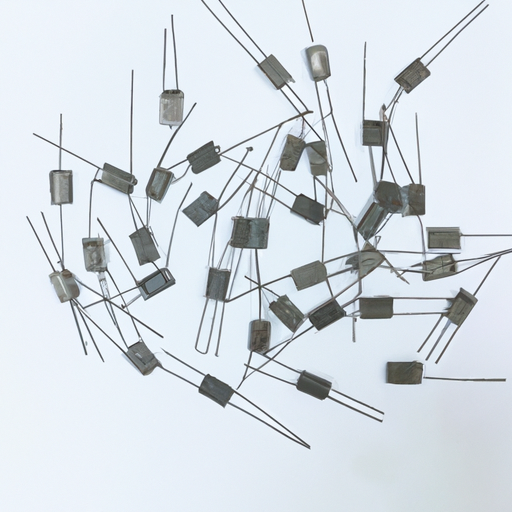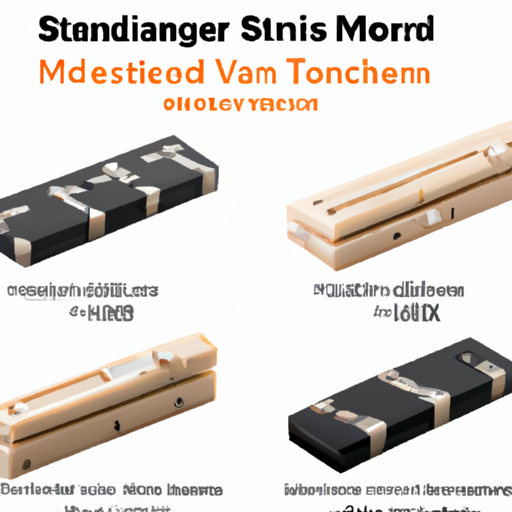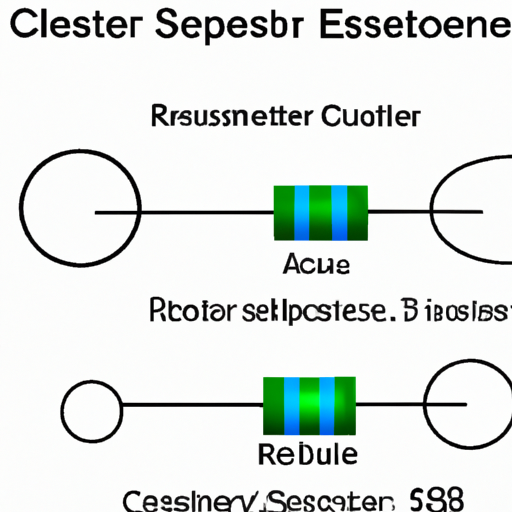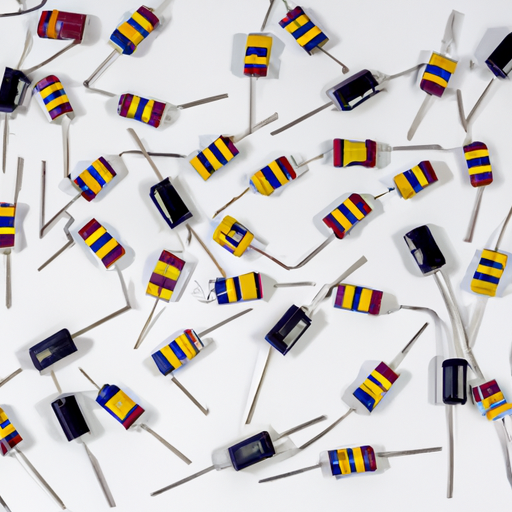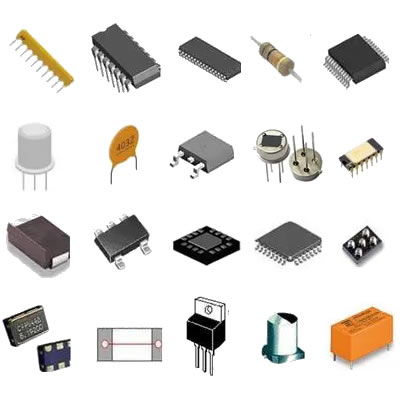What are the product characteristics of resistors and resistors?
Product Characteristics of Resistors
I. Introduction
A. Definition of Resistors
Resistors are passive electronic components that limit the flow of electric current in a circuit. They are fundamental to the operation of electronic devices, providing a means to control voltage and current levels. By converting electrical energy into heat, resistors play a crucial role in protecting sensitive components and ensuring the proper functioning of circuits.
B. Importance of Resistors in Electronic Circuits
In electronic circuits, resistors are essential for various functions, including voltage division, current limiting, and signal conditioning. They help maintain the desired operating conditions for other components, such as transistors and integrated circuits, thereby ensuring the reliability and efficiency of electronic systems.
C. Overview of the Article
This article will explore the product characteristics of resistors, including their basic, physical, and electrical properties. We will also discuss the different types of resistors, their applications, and the future trends in resistor technology.
II. Basic Characteristics of Resistors
1. Definition and Measurement (Ohms)
The resistance value of a resistor is measured in ohms (Ω) and indicates how much the resistor opposes the flow of electric current. The higher the resistance value, the less current will flow through the resistor for a given voltage.
2. Tolerance Levels
Tolerance refers to the allowable deviation from the specified resistance value. It is usually expressed as a percentage. For example, a resistor with a resistance value of 100 Ω and a tolerance of ±5% can have an actual resistance between 95 Ω and 105 Ω. Tolerance is crucial in applications where precision is required.
1. Definition and Importance
The power rating of a resistor indicates the maximum amount of power it can dissipate without being damaged. It is typically measured in watts (W). Exceeding the power rating can lead to overheating and failure of the resistor.
2. Power Dissipation and Heat Management
Power dissipation occurs when electrical energy is converted into heat as current flows through the resistor. Effective heat management is essential to prevent damage. Resistors are often rated for specific power levels, and larger resistors can dissipate more heat due to their greater surface area.
1. Definition and Impact on Performance
The temperature coefficient of a resistor indicates how its resistance changes with temperature. It is usually expressed in parts per million per degree Celsius (ppm/°C). A low temperature coefficient means that the resistor's resistance remains stable over a wide temperature range, which is critical for precision applications.
2. Types of Temperature Coefficients
Resistors can have different temperature coefficients, including positive, negative, and zero. Positive temperature coefficient (PTC) resistors increase in resistance with temperature, while negative temperature coefficient (NTC) resistors decrease in resistance. Zero temperature coefficient resistors maintain a constant resistance regardless of temperature changes.
III. Types of Resistors
1. Carbon Composition Resistors
These resistors are made from a mixture of carbon and a binding material. They are inexpensive and widely used but have a higher tolerance and temperature coefficient compared to other types.
2. Metal Film Resistors
Metal film resistors offer better stability and lower noise than carbon composition resistors. They are made by depositing a thin layer of metal onto a ceramic substrate, providing precise resistance values and low temperature coefficients.
3. Wirewound Resistors
Wirewound resistors are constructed by winding a metal wire around a ceramic or insulating core. They can handle high power levels and are often used in applications requiring high precision and stability.
1. Potentiometers
Potentiometers are adjustable resistors that allow users to change the resistance value manually. They are commonly used in volume controls and other applications where variable resistance is needed.
2. Rheostats
Rheostats are a type of variable resistor used to control current. They are typically used in applications where high power is required, such as in motor speed controls.
1. Thermistors
Thermistors are temperature-sensitive resistors that exhibit a significant change in resistance with temperature variations. They are widely used in temperature sensing and control applications.
2. Photoresistors
Photoresistors, or light-dependent resistors (LDRs), change their resistance based on the amount of light they are exposed to. They are commonly used in light-sensing applications, such as automatic lighting systems.
3. Varistors
Varistors are voltage-dependent resistors that change their resistance based on the applied voltage. They are often used for surge protection in electronic circuits.
IV. Physical Characteristics of Resistors
1. Through-Hole vs. Surface Mount
Resistors come in two main form factors: through-hole and surface mount. Through-hole resistors have leads that are inserted into holes on a circuit board, while surface mount resistors are soldered directly onto the surface of the board. Surface mount technology (SMT) is becoming increasingly popular due to its compact size and ease of automation.
2. Standard Sizes and Packages
Resistors are available in various standard sizes and packages, which are defined by industry standards. Common sizes include 0201, 0402, 0603, and 0805 for surface mount resistors, while through-hole resistors are often available in axial and radial configurations.
1. Conductive Materials
The conductive materials used in resistors can vary, with common options including carbon, metal film, and wire. The choice of material affects the resistor's performance characteristics, such as stability, noise, and temperature coefficient.
2. Insulating Materials
Insulating materials are used to encase resistors and prevent electrical shorts. Common insulating materials include ceramic, epoxy, and plastic, each offering different levels of thermal and electrical insulation.
1. Moisture Resistance
Moisture can significantly affect the performance of resistors. Many resistors are coated or encapsulated to provide moisture resistance, ensuring reliable operation in humid environments.
2. Temperature Range
Resistors are rated for specific temperature ranges, which indicate the conditions under which they can operate safely. Selecting resistors with appropriate temperature ratings is crucial for applications exposed to extreme temperatures.
V. Electrical Characteristics of Resistors
1. Definition and Importance
The voltage rating of a resistor indicates the maximum voltage that can be applied across it without causing breakdown or failure. Exceeding this rating can lead to catastrophic failure.
2. Breakdown Voltage
Breakdown voltage is the point at which a resistor fails due to excessive voltage. It is essential to select resistors with appropriate voltage ratings for the specific application to prevent damage.
1. Impact of Frequency on Resistance
The resistance of a resistor can change with frequency, particularly in high-frequency applications. This phenomenon is due to parasitic capacitance and inductance, which can affect the overall impedance of the resistor.
2. Applications in High-Frequency Circuits
In high-frequency circuits, specialized resistors are often used to minimize the effects of parasitic elements. These resistors are designed to maintain stable performance across a wide frequency range.
1. Thermal Noise
All resistors generate thermal noise, which is a result of the random motion of charge carriers within the resistor. This noise can affect the performance of sensitive circuits, particularly in audio and RF applications.
2. Flicker Noise
Flicker noise, also known as 1/f noise, is another type of noise that can occur in resistors, particularly at low frequencies. It is essential to consider noise characteristics when selecting resistors for precision applications.
VI. Applications of Resistors
1. Signal Conditioning
Resistors are used in analog circuits for signal conditioning, which involves modifying a signal to make it suitable for further processing. This can include filtering, amplification, and level shifting.
2. Voltage Dividers
Voltage dividers are circuits that use resistors to produce a specific output voltage from a higher input voltage. They are commonly used in sensor applications and reference voltage generation.
1. Pull-Up and Pull-Down Resistors
In digital circuits, pull-up and pull-down resistors are used to ensure that inputs to logic gates are at defined voltage levels. This prevents floating inputs, which can lead to unpredictable behavior.
2. Current Limiting
Resistors are often used to limit the current flowing through LEDs and other components, protecting them from damage due to excessive current.
1. Load Resistors
Load resistors are used in power electronics to simulate a load for testing purposes. They help ensure that power supplies and other components operate correctly under load conditions.
2. Snubber Circuits
Snubber circuits, which include resistors, are used to protect sensitive components from voltage spikes and transients. They help absorb excess energy and prevent damage to circuits.
VII. Conclusion
A. Summary of Key Points
Resistors are vital components in electronic circuits, with various characteristics that influence their performance. Understanding the basic, physical, and electrical properties of resistors is essential for selecting the right type for specific applications.
B. The Role of Resistors in Modern Electronics
As technology continues to advance, resistors remain a fundamental building block in electronic design. Their versatility and reliability make them indispensable in a wide range of applications, from consumer electronics to industrial systems.
C. Future Trends in Resistor Technology
The future of resistor technology may include advancements in materials and manufacturing processes, leading to more compact, efficient, and reliable resistors. Innovations such as smart resistors that can adapt their resistance based on environmental conditions may also emerge, further enhancing their functionality in modern electronics.
VIII. References
A. Suggested Reading
1. "The Art of Electronics" by Paul Horowitz and Winfield Hill
2. "Electronic Components: A Complete Reference for Project Builders" by Mark J. Balch
B. Industry Standards and Guidelines
1. IEC 60115 - Resistors for use in electronic equipment
2. EIA-198 - Standard for Resistor Color Code
This comprehensive overview of the product characteristics of resistors highlights their importance in electronic circuits and provides valuable insights for engineers and hobbyists alike. Understanding these characteristics is crucial for making informed decisions when selecting resistors for various applications.

